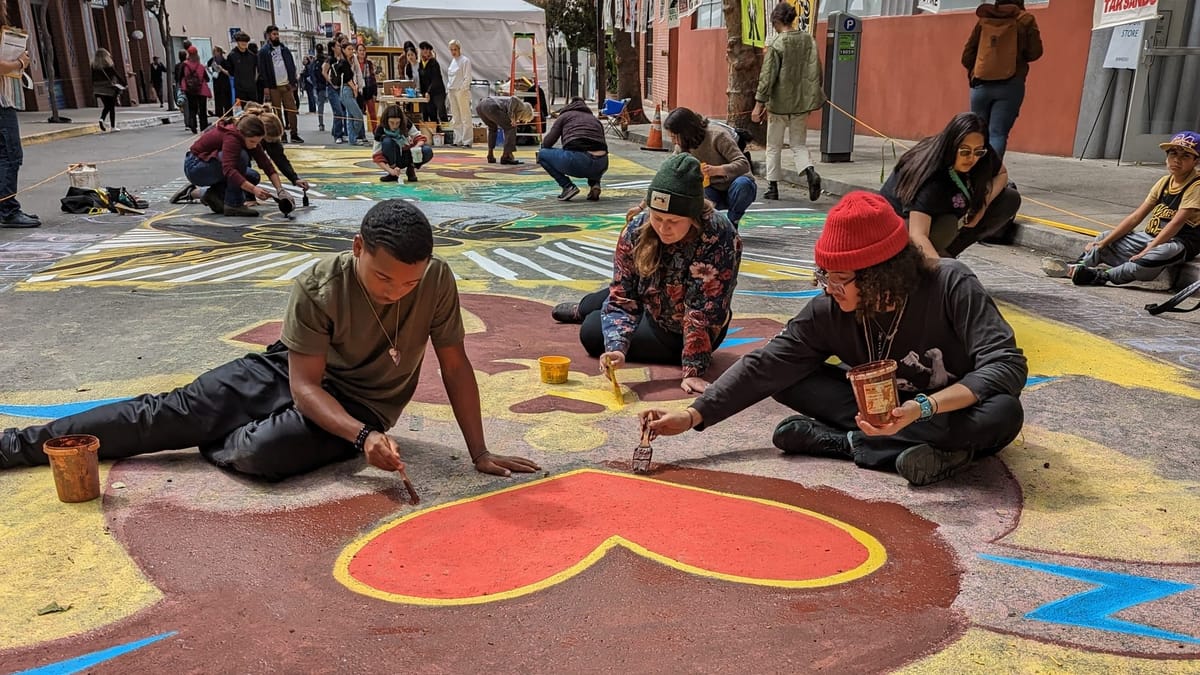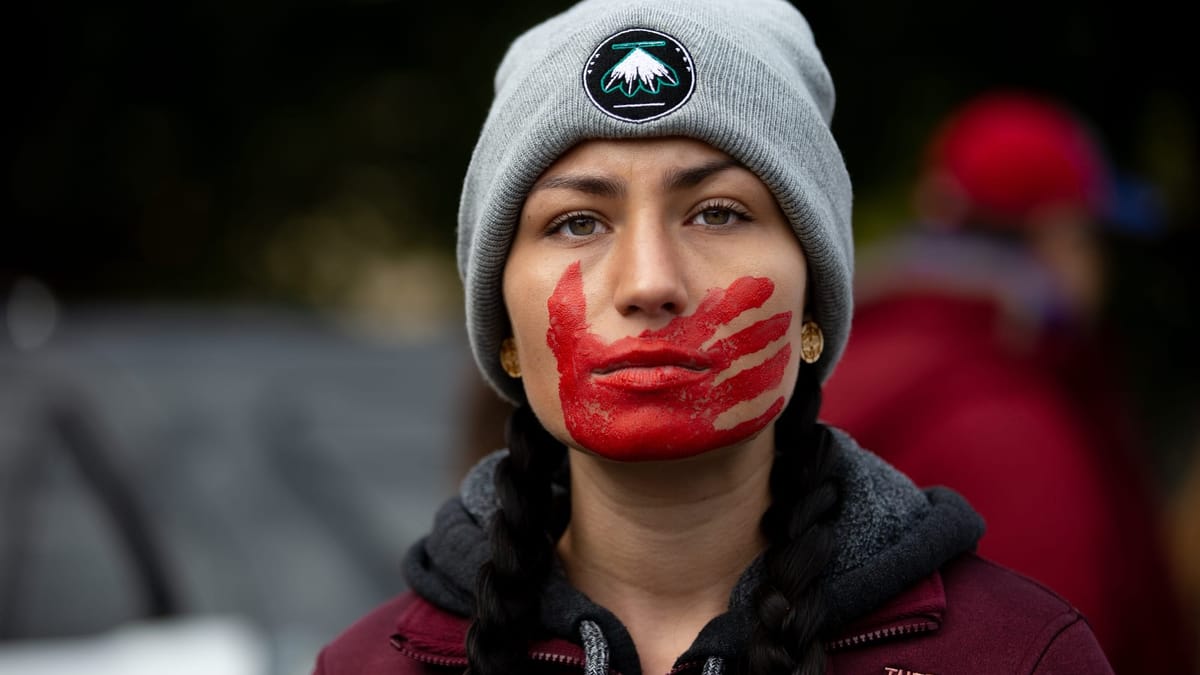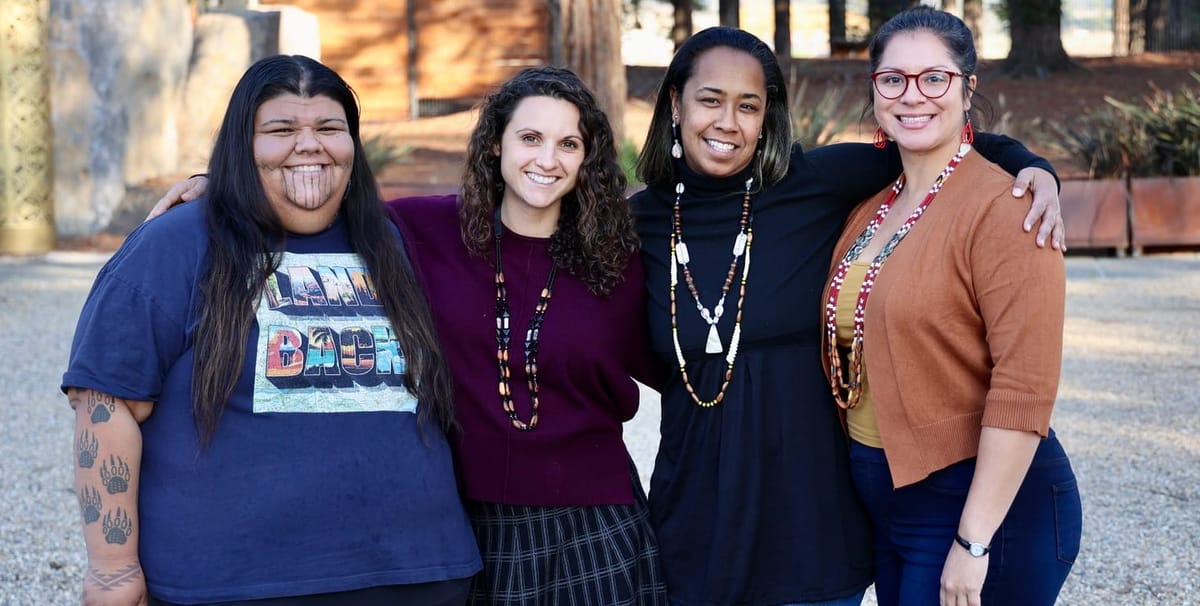Learning from Indigenous Voices
or, "Kilo" Where You Are

The Bay Area is a vibrant hub of Indigenous activity. If you catch yourself thinking that Native Americans are a thing of the past, read through the articles linked below. You'll discover that Native cultures are stronger, more widespread, and more interconnected than you knew.
But first, Pong...
Thanksgiving has always been my favorite holiday, visceral memories of my uncle's house filled with all the warmth that a harvest festival should. I am so lucky to be able to carry that tradition forward with my own family. Yo, you better believe my turkey-craft is dialed in.
But for my family and friends, I'm not looking to duplicate the rose-colored, pong-playing Thanksgivings of my youth. Pong, yeah I said it, these sideburns aren't grey for nothing.
I can't pretend that we don't know about colonization, genocide, and the position Thanksgiving holds in that sick legacy—I expect that you cannot either.
It has been my honor to meet with and learn from, and where I can, give back to, Indigenous leaders right here in the Bay Area—and it is my duty to share the challenging and beautiful stories that I've been told.
So while you prepare to celebrate the bounty of the earth before winter closes in, take some time to read through these stories of wisdom and resilience. Each article is a five-minute read and includes resources to educate yourself and take action.
Give thanks for what we can give others.
Giotis.
Now, follow me into the Indigenous Forum ...
Originally published on April 7, 2023
With the twice daily Indigenous Forums and representatives among the morning’s keynotes every day, Indigenous groups are having a moment at Bioneers, the systems thinking conference that brings together ecology and ancient wisdoms.
Since 2011, there has been the Indigeneity Program, whose leaders are among the moderators and panels in the forums. The conference is committed to Indigenous leadership as a key in responding to the climate crisis.
One example of how ancient practices interfaced with the modern condition was Kawenniiosta Jock “of the Kanien’kehá:ka, Wolf Clan from Akwesasne, Mohawk Nation Territory, President of the Waterfall Unity Alliance, board member of Onkwe Inc., and an alumna of the Akwesasne Freedom School, is an activist, land protector, master seamstress, traditional full-spectrum doula, mushroom hunter and artist. She works on preserving and restoring her people’s language, cultural teachings, and ancient knowledge.” I quote directly from her bio to let the extent of her work speak for itself.
Jock’s tribe is building an “old school longhouse” on a farm that runs a language immersion program in the summers. There are pick-your-own berries and a farm stand.
The process of healing has been long for them. Born on ancestral land that has been used for PVC dumping, Jock moved to Oregon to regenerate her other ancestral lands for the Schoharie Valley. As this land heals toward organic farming, a portion of the arable land has been set aside to grow veggies to deliver to the people of her other ancestors, that contaminated sister land that is still a long way from healing enough to grow its own food.
As Jock put it, “Land Back is about getting yourself back.”
Throughout the conference’s Indigenous forums, the rules were set by and with respect for the ancestral listening practices, a practice that is not a passive attitude. When they assent or support a speaker, members of the audience often call out a firm, full word, never yell it, yet it fills up the room. It’s A’ho. “A’ho” joins in each panel.
In the Indigenous Forums there was language everywhere. Each speaker began with formal acknowledgment in their ancestral language, presented with such verve and commitment as to honor the ancestors, not just in the forums, but at each keynote given by an Indigenous presenter, by each Indigenous panelist, a different but spiritually related language was evoked to lay claim to the right to be seen.
From the diversity of tongues emerges a clear picture of relatedness. From Tonga to Hawaii to the coastal tribes, the languages bear a similarity in worldview that might be very different in specific words and presentation, but which show the same attunement to listening, to honoring life.
To build the new voyager ship, Hōkūleʻa II, the Hawaii people needed big wood which doesn't grow on the islands these days. Because … drum roll … colonization. So the Indigenous people of Alaska provided the wood. Knowing that a ship is carrying on the work to revive the Polynesian art of navigation is starting that work from Alaska really brings into focus that the Pacific Ocean is a place in itself, a big place dotted by islands big and small. Turtle Island, from Alaska and down the coast, is among them, Aotearoa [“New Zealand”] and the Philippines too. These different peoples aren’t just related, they are and have been in communication for millennia.
Now, despite the 500 years of disaster to hit all these places, called colonization and by another frame, capitalism, Indigenous groups are breaking through the disruption with viable projects developed in harmony with heritage practices. Watch for an upcoming dispatch for more on non-profit organizations at Bioneers, many of which are Native woman-led.
All this made “place” a fifth presence on the panels, always chiming, adding to the conversation, saying “Remember me, always think of Place.” The conference made the very conscious choice of letting panels emerge from place to focus on a specific topic from the interest of their particular region.
Kawenniiosta Jock shared space with Madame Carrino Gould of the Chochenyo-speaking Ohlone, here presiding as the senior person of respect here at Bioneers, at least among the Indigenous Forum communities. In that way the Ohlone, of this place, represented the west coast of Turtle Island and the challenges and success of all these groups gave a rich picture of the interconnectedness of their problems and the rest of ours.
An example of a panel emerging from place was the Indigenous Science panel which reached across the ocean from Tonga to Hawaii, to explore the art of oceanography. The three scientists reflected on the gift of connection to the thing you are studying. These are the most valuable goals of science, to support the study of a place by those connected to it, to honor the gift of their wisdom, which flowed from the soil like their people.
And if you didn’t know, the voyager people are storytellers. Kiana Frank in this panel must have been the most dynamic presenter of the conference.
I hesitate to describe the storytelling. Although there may be video available from Bioneers, the audience was asked to take none. In that same spirit, I won’t say more than to note that the integration of the movements and the speech used by every Polynesian, Micronesian, and Melanesian presenter was so engaging, so powerful in its communication, that much of the content can be sensed even if it isn’t perfectly understood. The act of acknowledging in this way reminds one of moving meditations like qigong and pranayama.
Instead of me describing the power of this storytelling that flows like the great tides, I encourage you to seek your chances to connect with these stories and their tellers, and not through media but in person, where you are, or at gatherings like Bioneers. Come near them and sit.
After telling a story as her way of giving acknowledgment to the place and the people who were present, and those who are with us in other ways, Loa Niumeitolu connected her story to her history. “We are a voyaging people,” she said. There is an ageless tradition of mobility that connects people thousands of miles away and transmits information to each other through stories.
Niumeitolu gave many beautiful examples. If you want to “save the whales,” she pointed out, “learn from the people who have lived with whales,” the people who know them intimately.
“If you want to know an animal or a plant, get to know the people there,” Niumeitolu said. The knowledge and wisdom of the people of a land need to be robust in order to care for that land. “You don’t take out the animals [of the ecosystem], the insects, or the people,” she added.
“No snail, no whale,” Frank said, sharing the saying of her people that illustrates the island connection of forested mountains to the bounty of the sea.
What these stories tell is to listen. The act of telling the story itself brings the audience and the storyteller into a place of awareness, of connected presence within the place they are dwelling in that very moment, together.
It all starts with kilo, the Hawaiian notion for coming to place with presence. Opening your senses to learn what the land and sea are offering and what each is asking of humans.
Oceanographer with the University of Hawaii Manoa, Andrea Kealoha told about coming to understand patience in learning spearfishing as a child on the islands, traditionally an activity reserved for men. At first she could not understand why they waited so long by the ocean before they began. It was kilo and she learned what it was by doing it with her community.
Each of these place-based panels was fascinating in its own right. It all makes one want to dig deeper into these world traditions, get to know the language and stories of people around the world.
The Indigenous speakers at Bioneers have another take on it. If their stories move you, start to learn your own ancestries and the stories your people told about the land they emerged from. Look also at the land where you are, where you live and work. Practice kilo. Learn about and support the Indigenous people in your area, because you can bet they are still there, working to restore the land and regenerate the culture.
Click on Bioneers.org for more information about the 2025 conference.






